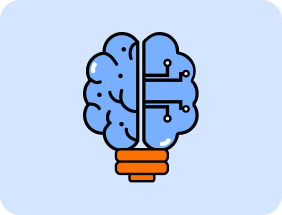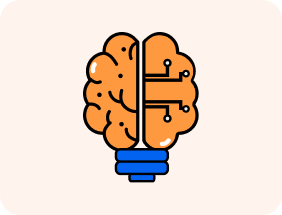Critical Thinking vs. Critical Reflection: Why Both Matter in 2025
Education, workplaces, and even our daily lives are changing faster than ever in 2025. New technologies, evolving career paths, and a flood of information challenge us every day. In this environment, two skills stand out as essential: critical thinking and critical reflection.
While they sound similar, they are not the same. Critical thinking is about analyzing and evaluating information to make better decisions. Critical reflection, on the other hand, is about looking inward, examining your actions, beliefs, and experiences to learn and grow. Together, they form a powerful combination for personal development, academic success, and career readiness.
This blog explores critical thinking vs. critical reflection, their differences, stages, activities to practice them, and why both are so important for the future of learning and work in 2025.
Critical Thinking vs. Strategic Thinking
One of the most common confusions is between critical thinking vs. strategic thinking. Both are important but serve different purposes.
Critical Thinking: This involves questioning assumptions, analyzing evidence, and breaking down problems logically. For example, if you read an article about climate change, critical thinking helps you check the sources, weigh the arguments, and form a rational opinion.
Strategic Thinking: This goes a step further. It’s not only about analyzing information but also about creating long-term plans and goals. Strategic thinking asks: “How can I use this information to reach my future objectives?”
In simple terms, critical thinking helps you evaluate the present, while strategic thinking helps you prepare for the future. For success in 2025, students and professionals need both skills but critical thinking lays the foundation.
Stages of Critical Thinking
Critical thinking is not something you learn in one day. It develops step by step, just like growing up. People move through different levels of maturity in how they deal with information, choices, and problems. Understanding these stages of critical thinking helps students and professionals know where they are and how they can improve.
1. Unreflective Thinker
At this stage, people accept information without questioning it. They often rely on memorization rather than understanding. For example, a student may learn a definition by heart but never ask why it matters or how it applies. This is the stage of bad study habits, where memory is passive and learning skills for students are not fully developed.
2. Challenged Thinker
Here, individuals begin to see that their thinking is limited. They notice that sometimes their logic doesn’t work or their knowledge is incomplete. This stage is the first step toward building learning strategies for students, because they realize improvement is possible.
3. Beginning Thinker
At this level, people actively try to question assumptions and seek evidence. They start practicing learning methods for students that involve deeper engagement, such as comparing ideas or testing their understanding. Bias is still present, but they are learning to recognize it.
4. Practicing Thinker
Critical thinking now becomes deliberate. Students and workers at this stage use reasoning in everyday life, whether solving assignments or making workplace decisions. This is where decision making in critical thinking becomes stronger.
5. Advanced Thinker
Here, critical thinking is consistent and independent. People can analyze issues fairly, consider multiple perspectives, and make logical choices. They are skilled in techniques for students to retain knowledge, as they understand how learning works beyond memorization.
6. Master Thinker
At the highest stage, critical thinking is not just a skill but a habit of mind. Individuals use it naturally for leadership, problem-solving, and innovation. They combine logical reasoning with reflective practice to continuously improve.
In both classrooms and workplaces, the most important progress happens when learners move from the “challenged thinker” stage to the “practicing thinker” stage. At this point, they stop relying on bad study habits like rote learning and begin using effective learning strategies that build long-term memory retention and career-ready problem-solving skills.
Critical Thinking Activities for Adults
For adults, critical thinking often needs refreshing because day-to-day routines and passive habits can weaken active reasoning skills. Engaging in structured activities helps to rebuild sharper thinking and decision-making. Here are some useful critical thinking activities for adults:
1. Debate Sessions
Organize group debates on current events or workplace challenges. The key is that participants must back their opinions with evidence and logical reasoning rather than assumptions. This strengthens both communication and analytical skills.
2. Case Studies
Analyzing real-world business, social, or ethical problems gives adults practice in breaking down complex issues. By brainstorming possible solutions, they learn to weigh options, identify consequences, and practice decision making in critical thinking.
3. Role-Playing
In role-play activities, individuals take on different perspectives in a situation, such as playing the role of a customer, manager, or policymaker. This helps uncover hidden biases and assumptions while improving empathy and problem-solving.
4. Fact vs. Opinion Exercises
In today’s information-heavy world, separating facts from opinions is a vital skill. Reading an article or watching the news and then classifying statements as evidence or personal views trains adults to think more critically about information.
These activities not only sharpen reasoning but also make adults more effective in workplaces where decision-making is crucial.
Critical Thinking Activities for College Students
College is the perfect place to build critical thinking because students are exposed to new ideas, disciplines, and challenges. Some critical thinking activities for college students include:
Group Projects: Instead of just dividing tasks, encourage analysis of different approaches and solutions.
Socratic Questioning: Professors can ask “Why?” repeatedly to push students to justify their answers.
Critical Reading Assignments: Students should highlight assumptions, biases, and missing perspectives in academic texts.
Simulation Games: Mock trials, business competitions, or model UNs help students apply logic to real-world contexts.
By practicing these activities, students not only succeed in assignments but also develop career-ready skills like problem-solving and collaboration.
Critical Thinking Assignments
Assignments are one of the best tools for teaching critical thinking. A critical thinking assignment is not about memorization but about application. Here are some examples:
Problem-Solution Essay: Students research an issue, evaluate multiple solutions, and argue for the best one with evidence.
Comparative Analysis: Assignments where learners compare two theories, viewpoints, or case studies to identify strengths and weaknesses.
Reflection Papers: While more aligned with reflection, they also require analyzing experiences critically.
Research Projects: Students must not only collect information but also evaluate the reliability of sources and data.
Such assignments prepare learners for decision making in critical thinking, which is vital in professional life.
Decision Making in Critical Thinking
One of the most important applications of critical thinking is decision making. Whether in personal life or at work, decisions define outcomes.
Critical thinking improves decision-making by:
Encouraging people to look at multiple options.
Identifying risks and benefits clearly.
Questioning biases that cloud judgment.
Making choices based on evidence, not emotions alone.
For instance, in a workplace, a manager deciding between two strategies for growth must analyze market data, potential risks, and long-term goals. Critical thinking ensures the decision is logical, not impulsive. Tools like YMetaconnect also encourage learners to practice structured reflection and analysis, which strengthens real-world decision-making skills.
Reflective Practice and Critical Reflection
Now let’s look at the other side: critical reflection. This is part of reflective practice, where individuals examine their experiences to learn and improve.
Reflective Practice
It’s the habit of thinking about your actions, identifying what worked, and finding areas for improvement. Teachers, doctors, and leaders often use reflective practice techniques to improve their work.
Critical Reflection
This goes deeper. It not only reviews actions but also questions underlying beliefs, values, and assumptions. For example, a teacher might reflect not just on whether a lesson went well but also on whether their teaching method is fair to all learning styles.
In 2025, both are crucial because workplaces demand not just technical skills but also adaptability, empathy, and self-awareness.
Practicing Critical Reflection
So, how can students and professionals begin practising critical reflection? It starts with small, consistent habits.
Journaling: Writing about daily experiences helps capture what went well and what could be improved.
Feedback Sessions: Asking peers or mentors for constructive feedback provides new perspectives you might miss on your own.
Mind Mapping: Visualizing links between actions, experiences, and outcomes makes it easier to see patterns and lessons.
Questioning Beliefs: Regularly challenge your assumptions by asking, Why do I think this way? or Is this belief still relevant today?
With regular practice, reflection becomes more than an academic tool—it turns into a lifelong habit of learning, growth, and self-awareness.
Reflective Practice Techniques
There are many reflective practice techniques that teachers, students, and professionals can use:
Gibbs’ Reflective Cycle: Encourages reflection through six steps, description, feelings, evaluation, analysis, conclusion, and action plan.
Kolb’s Experiential Learning Cycle: Focuses on learning by doing, reflecting, conceptualizing, and experimenting.
Brookfield’s Lenses: Reflection from four perspectives, self, students/others, colleagues, and theoretical frameworks.
Peer Feedback: Working with peers to reflect on shared experiences.
Using these techniques builds a habit of thoughtful growth and prepares learners for dynamic challenges in the future.
Critical Thinking vs. Critical Reflection: Why Both Matter in 2025
So why should we focus on both skills now?
Critical Thinking prepares you to analyze the world around you. It helps you question, evaluate, and make informed choices.
Critical Reflection prepares you to analyze yourself. It helps you grow, adapt, and align your actions with your values.
In education, combining them ensures students don’t just memorize content but learn how to think and how to learn from experience. In workplaces, it ensures professionals can handle change, work collaboratively, and improve continuously.
The Future of Learning and Work
As AI, automation, and global collaboration reshape industries, the ability to think and reflect becomes more valuable than any single technical skill. Machines can store information and perform tasks, but they cannot replicate human reasoning and self-awareness.
In 2025 and beyond:
Critical Thinking will be essential for problem-solving and innovation.
Critical Reflection will be essential for adaptability, ethical decisions, and personal growth.
Together, they ensure that individuals are not just surviving but thriving in a fast-changing world.
The Bottom Line
The debate of critical thinking vs. critical reflection is not about choosing one over the other. Instead, the real power lies in practicing both. Critical thinking equips us to deal with external challenges logically, while critical reflection helps us deal with internal growth thoughtfully.
Whether through critical thinking activities for college students, critical thinking assignments, or reflective practice techniques, learners and professionals must actively build these skills. In 2025, success will not depend on memorizing facts but on analyzing, reflecting, and applying knowledge wisely.
If you want to stay relevant, future-ready, and resilient, start sharpening these two lifelong skills today.
Read More


 Learner
Learner Mentor
Mentor Organisation
Organisation
 Learner
Learner Mentor
Mentor Organisation
Organisation










